Design
The design world was full of drama and controversy this year, and we couldn’t get enough. We’ve seen an attempt to re-brand the south, a style guide for the government, and some highly-publicized plagiarism.
The design world was full of drama and controversy this year, and we couldn’t get enough. We’ve seen an attempt to re-brand the south, a style guide for the government, and some highly-publicized plagiarism.

In theory, government website are about to get a whole lot better. This year new U.S. Web Design Standards were released aiming to enhance the user experience and consistency across government websites.
This is a great idea for so many reasons. Clear, concise, and clean sites increase user confidence, create efficiencies in processes and may even positively change perceptions regarding government waste. Just the right amount of design and usability. If only they could bring this guide to the DMV.

The recurrent division and controversy around the Confederate flag inspired Studio 360 to commission a new symbol for The South. They charged 70kft, a Dallas design firm, to create a symbol that celebrates the best of American rebelliousness without stirring memories of the worst. The new design eschews traditional southern symbols, instead drawing on themes common to American vexillology (e.g. red, white and blue stripes).
With much to be proud of and celebrate, it seems only natural to seek a new symbol that simultaneously acknowledges and sheds the past. More importantly, as future generations become further removed from the symbolism of the Confederate flag, its power to stir hate and fear will wane. Surely that is a goal we can all rally around.
If we can only rebrand the Washington Redskin.

This year, Tokyo released the official logo for the 2020 Olympics. On the day of the announcement, the Tokyo 2020 Organizing Committee described the logo as “encapsulating the power of Olympic Unity.” However, just days after the release, designer Olivier Debie came forward claiming that the new logo looked suspiciously like one he had released in 2011 for the Teatre de Liege in Belgium.
When comparing the two logos, things get…awkward. The symbols are so similar, the originality of the Tokyo logo is hard to believe. Eventually, the logo was scrapped, and Japan has begun a “contest” for the creation of a new logo. Let’s hope these designers stay off of Google’s image search this time around.
We’re getting to the point that science is starting to encroach upon what we thought was only science fiction. Tractor beams. X-Ray glasses. James Bond-style wearables. The future is now.
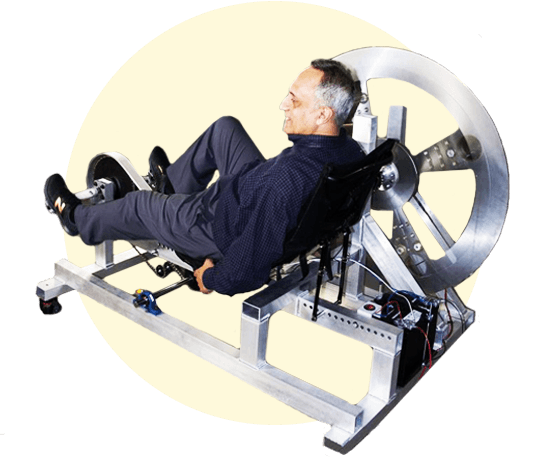
5-hour Energy drink creator, Manoj Bhargava, took his affinity for energy and developed a battery-pack equipped stationary bike that turns manpower into electricity that will power homes around the world. In just one hour, one household bike will generate enough electricity to power light, appliances and more for an entire day.
As the Free Electric initiative roll-out commences, the multi-phase plan will distribute 50 of the bikes to be tested in remote villages in India. In a later phase of Bhargava's plan, 10,000 bikes will be placed in Indian homes that lack access to power. In regions with electricity, the bikes may serve as a backup power source when the grid fails.
We’re excited to see how this unfolds in 2016, it definitely sheds new light on those New Year resolution spin-classes.
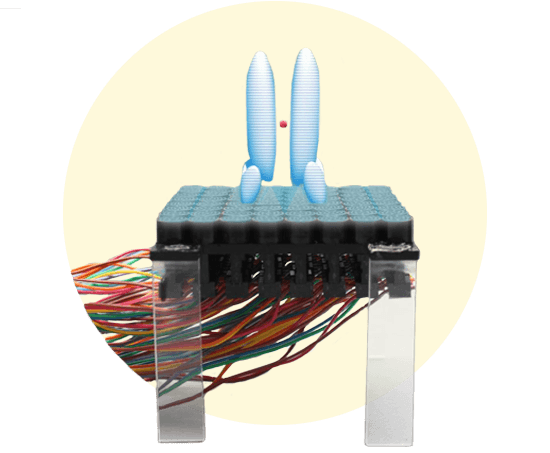
Certain sounds can be very moving, particularly if they are ultrasonic and you are a bead the size of a cocoa puff. This year researchers used a single bank of speakers (prior successes used two banks) emitting ultrasonic frequencies to manipulate a bead in three dimensions. How? Multiple sound waves interact with each other to create interference patterns.
The achievement for the researchers was the creation of an algorithm that adequately modeled the interference patterns generated by their ultrasonic emitters. When controlled, the interference patterns act like fingers that raise, rotate and propel the bead. Despite the progress, it may be a while before the International Space Station is using tractor beams to reel in supplies, unless they do it one cocoa puff at a time.
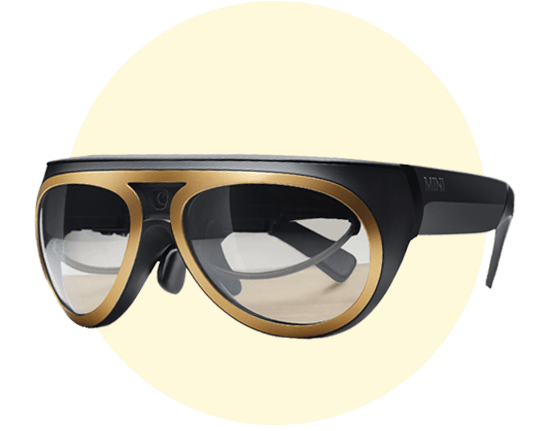
Well, technically that’s not true. But they will let you see what your Mini’s body obscures. BMW and Qualcomm are developing a wearable heads-up display. Worn like glasses, the display receives input from the car’s external cameras. Camera input is displayed according to the direction the wearer is looking. The effect is one of being able to see through car bodies and engine blocks.
With distracted driving always an issue, the designers have worked to minimize obtrusive icons or displays. Sometimes the hardest part of driving is parking. The glasses ease this task by helping to find a parking place and assisting with the parallel variety.
As new gadgets are invented, reinvented, or crowd-funded, we’re on the case. Here are some gizmos that we absolutely loved this year.
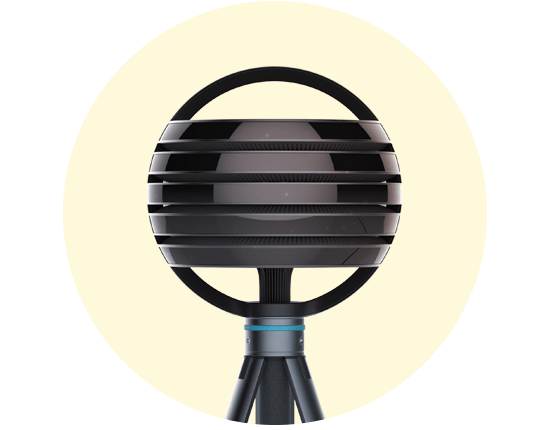
Lytro’s Immerge camera uses light field photography to film in three dimensions over a full 360 degrees. By capturing all the light that its sensors receive, and recording information on light intensity and direction, the camera records its surroundings in a way that makes them “playable” in a virtual reality system.
Although gaming is the oft-cited “killer app” of virtual reality innovation, the Immerge’s ability to capture real places on Earth could make it most useful for bringing important places to those who can’t reach them. Cultural and sporting events, emergency situations and historical locations and recreations could all “get real” in a virtual way.

As the late Julian Simon recognized, people are “the ultimate resource.” A real close second is a computer. This year’s announcement that the Raspberry Pi Foundation would produce the $5 Pi Zero computer was a new low (price-wise, of course) in the quest for processors for the proletariat. What might happen when processing power is inexpensively distributed into the hands of billions of people who have many needs but few tools? With the Pi Zero, we are about to find out.
An inexpensive computer may be all it takes to unleash a million geniuses from Myanmar to Mali. Aside from feeding the mind, $5 Pis in the hands of people with diverse problems and perspectives may help transform humanity from seven billion people with problems into seven billion problem solvers.
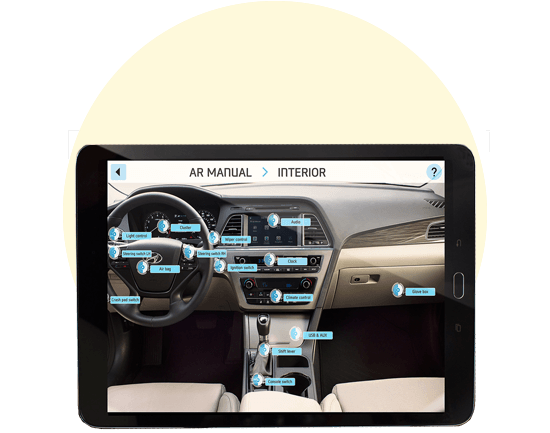
Finally, an owner’s manual that you want to experience! This year Hyundai turned the spinach-laden spoon into an airplane and harnessed augmented reality to give owners the next best thing to a mechanic-guided tour of their new Hyundai model. The idea is simple enough--download the app on a mobile device and tell it what model and options apply.
Whether looking under the hood, at the dashboard or the exterior, point your mobile device’s camera and in a few seconds it will be identifying components, displaying general information and providing basic maintenance instructions. With a stated goal of addressing “pain points” in adapting to technology in an automotive setting, this looks like a promising first step.
What do digital vigilantism and Uber courage have in common? They were both a part of our favorite news stories this year. The world of digital seems to be ever-growing.

After the heartbreaking terrorist attacks in Paris this Fall, the infamous hackers, Anonymous, declared war on the party claiming responsibility: ISIS. Messages posted by the group on Twitter and YouTube claimed they were “preparing to unleash waves of attacks” on the terror group. Why is this important? The Internet is now so powerful, and so prevalent, that vigilante citizens are attempting to digitally police the world; a futuristic, science-fiction-like twist on an already sticky situation. Simply put, this would not have happened even ten years ago. The world is a crazy, crazy place.

After a testy battle with the St. Louis Metropolitan Taxi Commission this year, Uber finally said “screw it” in September, and launched anyway. To add insult to injury, Uber decided to file a federal anti-trust lawsuit against the commission as well. That’s what we call “laying down the hammer.” St. Louis was lagging behind the rest of the country (again), as Uber claimed the city was “the largest metropolitan area in the country not to allow UberX.” Kudos to Uber for standing up to the Cartel on this one.

When you first heard the term “Net Neutrality,” you may have wondered why someone would have zero opinion on fishing gear. Hopefully by now, you’ve come around and understand that this was a big deal in 2015. In February, the Federal Communications Commission voted to implement rules that ensure Internet service providers treat all legal content equally. It was a not-so-well-kept secret that ISPs were favoring and blocking particular products and/or websites to favor their own interests. This is now not a possibility, thanks to the FCC. Now, rejoice and Google something.
From a raccoon hitching a ride on the back of a crocodile, to a weasel riding a woodpecker, and a dress that had us losing our minds.
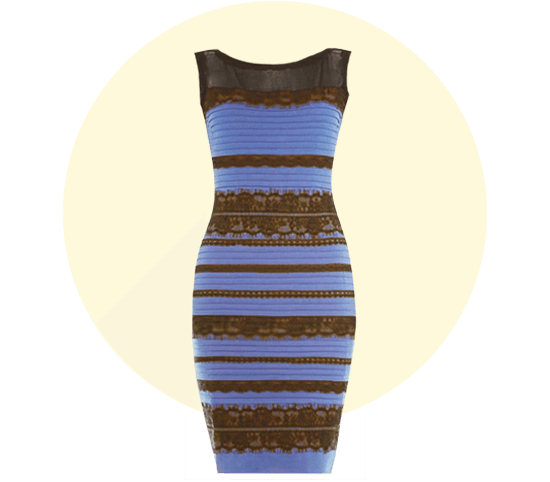
Blue and Black or White and Gold?! You know what we're talking about, and you definitely know what you saw. In February, a dress broke the internet. Not because it was stunning, innovative, from a top design house, risqué, incredibly cheap or super expensive, but because it was two dresses in one.
Depending on your eyes, you saw a blue and black dress or a white and gold dress. We debated it here - gathered around a computer and shouted with certainty which colors we saw, dumbfounded that the people standing next to us saw something else. You did the same thing, no doubt.
So what gives? Not the eyes, but the brain. That’s right, your brain does a lot to fill in the gaps of what you may or may not actually be “seeing” with your eyes. Your brain interprets what you see based on variables such as surrounding colors, lighting, time of day, even your memory and past experiences.
And that, dear friends, is science.

Pizza, rats, and the subway are pretty common in New York. Some would call them icons of the city. That’s why people went crazy when they witnessed the perfect combination of all three things: a rat was filmed struggling to carry a pizza slice down subway steps. The video quickly went viral, and it seemed that in hours the world was obsessed with this little guy fighting the big fight.
Pizza Rat was covered on the news, on endless blogs, and eventually somehow became a symbol for those struggling to get by in NYC. People dressed as Pizza Rat for Halloween, got aPizza Rat tattoo, and of course, there was a "But are you REALLY a Pizza Rat?" Buzzfeed quiz.

You know that saying “there’s no such thing as bad publicity?” Yeah, well Amazon seems to be strong believers.
What was billed as a monumental sale didn’t go as hoped. Instead, #PrimeDayFail became a thing. Sales better than Black Friday in July!? Not so much. Basically enthusiastic Amazon Prime shoppers were promised and were expecting deals, but instead the items up for grabs have been likened to the "gems" found at a yard sale. Overall, Prime day was a bit of a dud, filled with disappointment, complaints, and sarcasm. But in the end, Amazon indeed received a lot of publicity from this, and that’s never a bad thing.
Well that flew by, right? What a year. Marriage equality, Star Wars, a bigger iPad, the Cubs losing in the playoffs despite prophecy (really, just a movie), and a dress that made our heads collectively explode. We’ve seen a lot in 2015.
The following is a simple list of the things we loved in Digital Media this year. We invite you to take a moment, explore, and share with friends. It was a great year. Let’s celebrate it together!
©2015 Paradigm New Media Group
When you work in Digital Media, it’s hard to ignore the things companies like Apple and Google do on a regular basis to help push technology forward. Even it’s just a big tablet. Here are our favorite things from Apple this year.
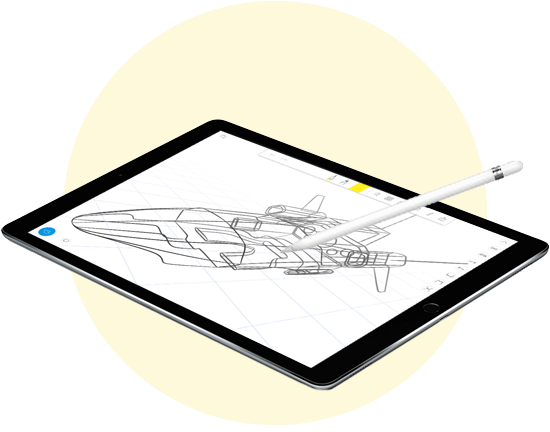
This year, Apple welcomed the birth of the largest child in the iPad family: at a whopping 12.9 inches (the size...and price, of a small-ish laptop), and it’s favorite toy, the Pencil (sold separately). For designers, this is a nearly-ideal canvas: more room to play, and more precise toys to play with. And with a screen as impressive as it is large, it may be worth the cumbersome size-compromise. After all, with quad speakers and split screen capabilities - just think of the multitasking!
It may be a cliché, but size isn’t everything. Despite the pretty screen - we agree with CNET’s assessment of the situation, and that how the Pencil charges via the device is just funky.
The fact is that the iPad Pro still has a long way to go to fully drive laptops into extinction. Until then, at least we’ve found a remedy for ‘phablet’ syndrome - let’s just make tablets BIGGER.
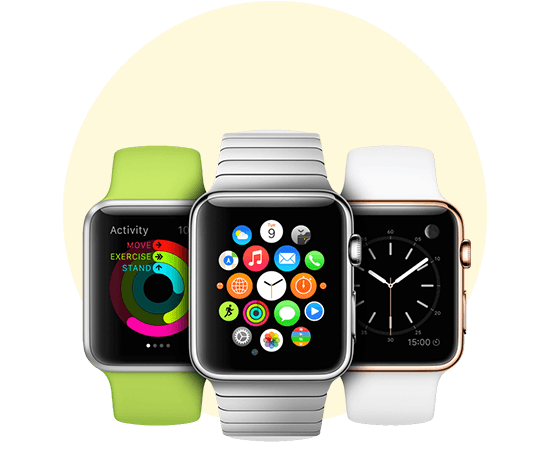
Depite the fact that it was one of the most highly-anticipated tech releases years before it even made its debut, the masses are still not clamouring for the wearable. We’ll admit, we were intrigued by the potential - but alas, let down by the watch’s ample limitations (disappointingly low battery life paired with minimal capabilities).
And the 4-fold notification system that either give you a semi-meaningful notification, or prompt you to check your phone have basically made the Apple Watch the $500 wearable equivalent of the Tamagotchi. Fast Company dives into the Apple Watch’s multi-faceted downfall for those of us who like tragic tales, dreams of grandeur, and disillusionment.
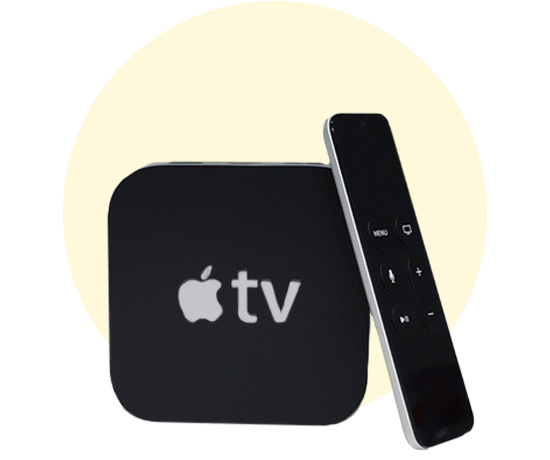
It’s been a solid 730 days since Apple TV’s most recent refresh, and this go-around Apple gave their living room hardware more than just a simple dust-up. Though the basic silhouette of the new version hasn’t changed much, they’ve upped the computing power game, and geared this update towards a full entertainment experience. Users now have a touchpad remote for navigating, the entire App Store at their fingertips, rather than the preset list of apps curated by Apple, and use it as a gaming console.
For those who lose that new remote out of the gate - you can just ask Siri to help guide your movie night, “Siri, anything but Frozen, again.”
At this point it’s probably no secret that a new Star Wars film was released in 2015. It didn’t exactly “fly under the radar.” Similarly, it’s probably also not a secret that Paradigm is home to some of the finest Star Wars nerds in the galaxy. Let’s just say, it was a big year for us. What were our favorite Star Wars things in 2015?
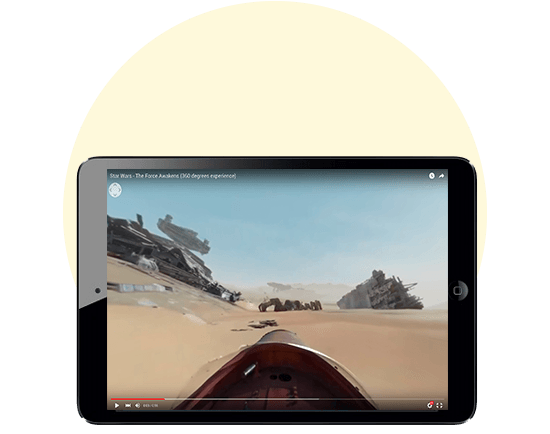
As fanboys and fangirls around the world anxiously await the December 18th release of Star Wars: The Force Awakens, Lucasfilm and Disney had the foresight to keep up the movie-momentum with an interactive 360 video that puts you in the driver’s seat of Rey’s speeder (complete with BB-8 sound effects at the end of the tour).
Unveiled on the official Star Wars Facebook page, the minute-long video gives you control of the speeder’s views of the Jakku ruins as you tilt and pan the smartphone screen, or by clicking and dragging if you’re desk-bound.
Be warned - the Force is not with Safari as this adventure is NOT accessible through Safari’s desktop platform. You’re welcome.
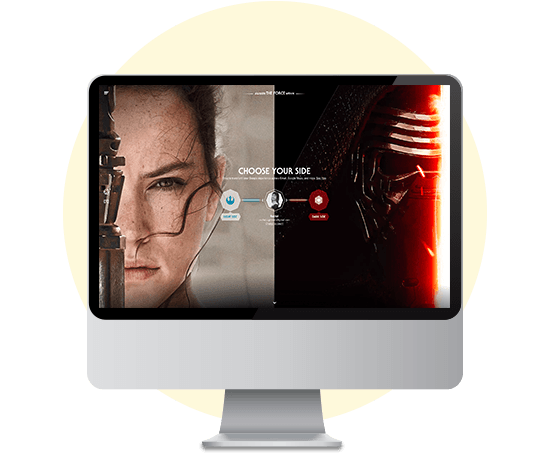
If you’ve ever wanted to experiment with being on the light side or dark side of the force without fully committing, Google and Star Wars have teamed up to bring you a side-conscious Google experience. Once selecting a side, your views will be customized - red light saber loading bars vs a blue one! We bet you hardly contain your excitement.
Just wait until Google Maps transforms your traditional blue dot into one of two aerial options. If you’re suddenly cruising the interstate in a Tie Fighter, you know you picked the right side.

The last Star Wars movies came to be during a simpler time. Online-spoilers, leaks, and rumors had yet to run rampant through our society. Inevitably, when the mammoth franchise entered into the digital-era of social and instantaneous sharing, we sensed a disturbance in the force.
From Reddit, the ever-active forum for all things-everything on the Internet creating it’s own Star Wars Leaks subreddit dedicated to the cause, to the ImageShack Scandal that’s gotten Disney up in arms, it is clear that the Empire - errrmm, we mean Disney will have their hands full.
The Internet is a gigantic and terrifying frontier, where you may find leaks and litigious backlash, but you MAY also find solid evidence that mysterious new villain, Kylo Ren, is actually a pediatrician.
Every year it seems the boundaries of what an app can be are pushed a little further out. This year, apps continued to catch fire and take off with the general populace.

The app Fyuse combines video, GIFs, and photography to take you from 2D to 3D via your smartphone. Using spatial photography, anyone can now create 3D images. In 2015, phase 3.0 was launched, which features an updated user interface and renderings, 3D tagging, and advanced engagement tracking. Plus it’s now available for Android.
A simplified explanation of the process is that one takes a static 2D image and tilts or swipes phone around, say a person, to see from different angles, capturing space, like a video and poof! you have a 3D image. Movement has been created. There’s a bonus. Fyuse includes features so you can export to social media and embed on the web.

2015 was a banner year for narcissists and voyeurs alike. With the introduction of live broadcasting apps Meerkat and Periscope, there was something for those who enjoy being on both sides of the window. Both apps enable live broadcasting of events profound and mundane. It is too early to tell if either will be the knockout winner in this space but already they have begun to differentiate themselves with different features and that process is likely to continue as the market develops.
Although it seems like a medium geared toward highly-sought personalities it is easy to imagine a breakout performance propelling someone new into the spotlight. In August, Blab entered the livestreaming market although it remains in beta. So, if merely posting pictures of your food on Facebook begins to seem like you’ve under-shared, try one of these apps to broadcast yourself eating it.
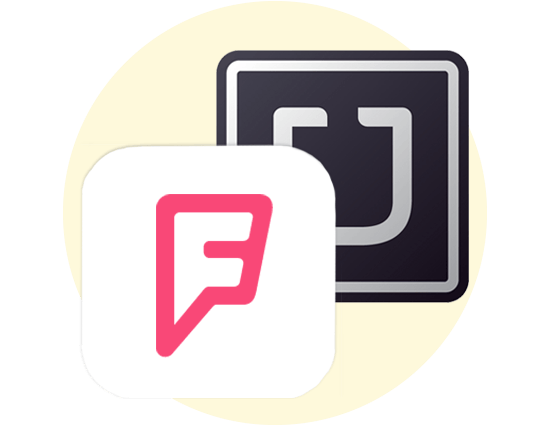
Need a suggestion or help making a decision on where to go to dinner? That's where Foursquare comes in, providing suggestions hopefully you’ll like. Thank you, location determined. But now how to get there? Uber, of course. What’s more, Foursquare and Uber have teamed up. Select the establishment in Foursquare, and from within the app you can now call a ride from Uber. Just tap the Uber icon, then tap Ride there with Uber and you’ll be there in a jiffy. The integration? Working together is always better. Uber opened its API and integrated with Button’s DeepLink Commerce platform.
Google… err… Alphabet… We mean Google… Do we? Whatever they’re called now, we try to make sense of it (and other things they did this year) below.

After October 2, 2015, Google underwent a significant corporate restructuring, and divided their various projects from A to Z beneath a new overarching holding company, Alphabet. A few of the letters beneath Alphabet are subsidiaries - such as Google X and Calico to name a few - but being a household name with clout, why would Google dissect a well-known company with such a legacy?
In case you are curious, or just never knew why - here’s what we learned: Google didn’t go anywhere. It merely became an independent facet within the Alphabet company. Why? From appeasing investors to giving their company more management flexibility for their wide-spread interests and endeavors. Want more? Forbes was able to shed some light on the logic behind the transition for your reading pleasure.
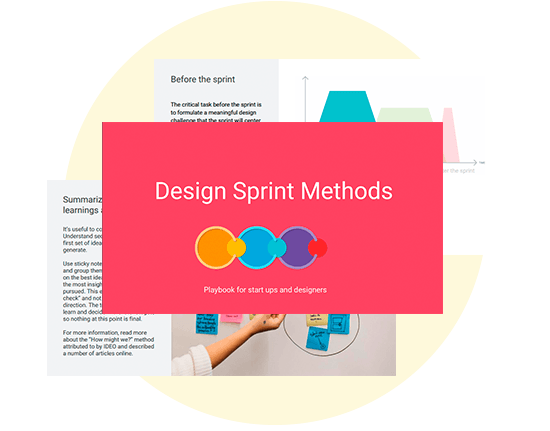
Google Ventures (GV) wants to help you bring your big idea to life. The Design Sprint is Google’s five-day process that condenses months-worth of time into a single week - from design to prototyping and testing - for an array of business concepts.
One great feature included in the sprint is a schedule for building and testing your idea within 40 hours. Monday is dedicated to discussing the problem. Tuesday, you will begin to visually illustrate and draw out a variety of solutions. Wednesday is specifically for deliberating on the best way to test your solutions, and Thursday will be spent creating your prototype. Finally, on Friday, GV recommends that you to test your prototype with the public.
If anything, it sounds like the most productive week we’ve had in a long time.

Are you a homeowner? Have you ever considered converting your roof into a giant battery? Do you love the Earth and want to be less reliant on the grid while exploring emerging energy solutions? If you answered yes to any or all of these questions, then Google’s Project Sunroof is for you!
Google launched the Project Sunroof initiative, using Google Earth’s high-resolution aerial assets to help assess the world’s solar potential, in their words, “one roof at a time”. By simply entering your address, you can see how effective your home’s logistics (weather patterns, aerial imagery, shade from trees, etc.) are as a solar power provider. The Project Sunroof website helps those interested in this alternative energy solution to not only see their home’s potential, but also provides a calculated estimate of net savings, and helpful next steps to getting your pad upgraded.
It seemed so far away at the time, but 2015 came as promised. Was it exactly what the Back to the Future writers envisioned? Well, no. Was it close? Actually, yes.
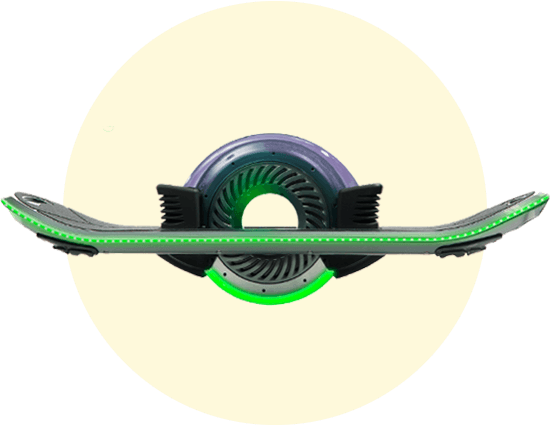
Hoverboards? Hoverboards!?? DEAR GOD, hoverboards!!!! What was the apple of every kid’s eye in the 90’s, the hoverboard, finally, finally made it to reality in 2015. Kind of. Most of these don’t actually hover, and the ones that do are highly restricted, and the reality of others are questionable, but let’s not split hairs here, m’kay? Check out the Lexus Hoverboard, the Hendo Hoverboard, Hoverboard.com and Hoverboard360.com.
However, if this is on your wish-list this year, make sure Santa also brings you a fire extinguisher, or parks this bad boy under a flame-retardant tree. It’s said that the spontaneous, catching-fire epidemic of recent weeks is due to the dubious quality of the rechargeable, lithium-ion battery.

Since Back to the Future II was released in 1989, we’ve been waiting for the future that writers Bob Gale and Robert Zemeckis laid out for us. And for a time, Gale and Zemeckis were looking like prophets as we were slowly introduced to personal credit card readers, flat screen tvs, and other pieces of tech they nailed (see below).
But, Ohhhhh, the Cubs. Gale and Zemeckis’ fictional 2015 World Series winners managed to make things interesting, but ultimately failed to claim baseball’s biggest prize after getting bounced in the NLCS by the New York Mets. While this isn’t that earth-shattering, we had to include this because we couldn’t miss a chance to take a shot at the Cubbies.
So there.
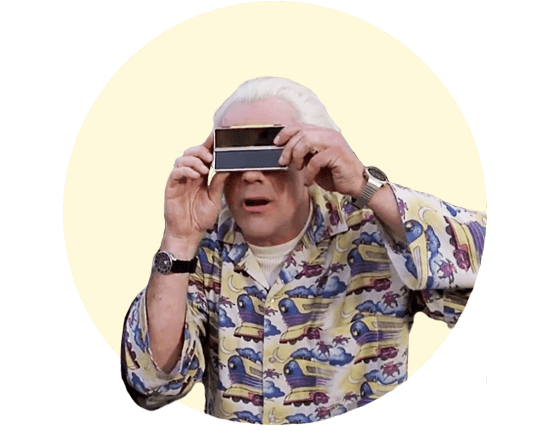
As we mentioned previously, Bob Gale and Robert Zemeckis are kind of like oracles. Want proof? They correctly predicted 2015 tech like computers running via voice commands and video captured by drones. They also predicted our recent obsession with sequels and 3D movies.
Now, about those flying cars…